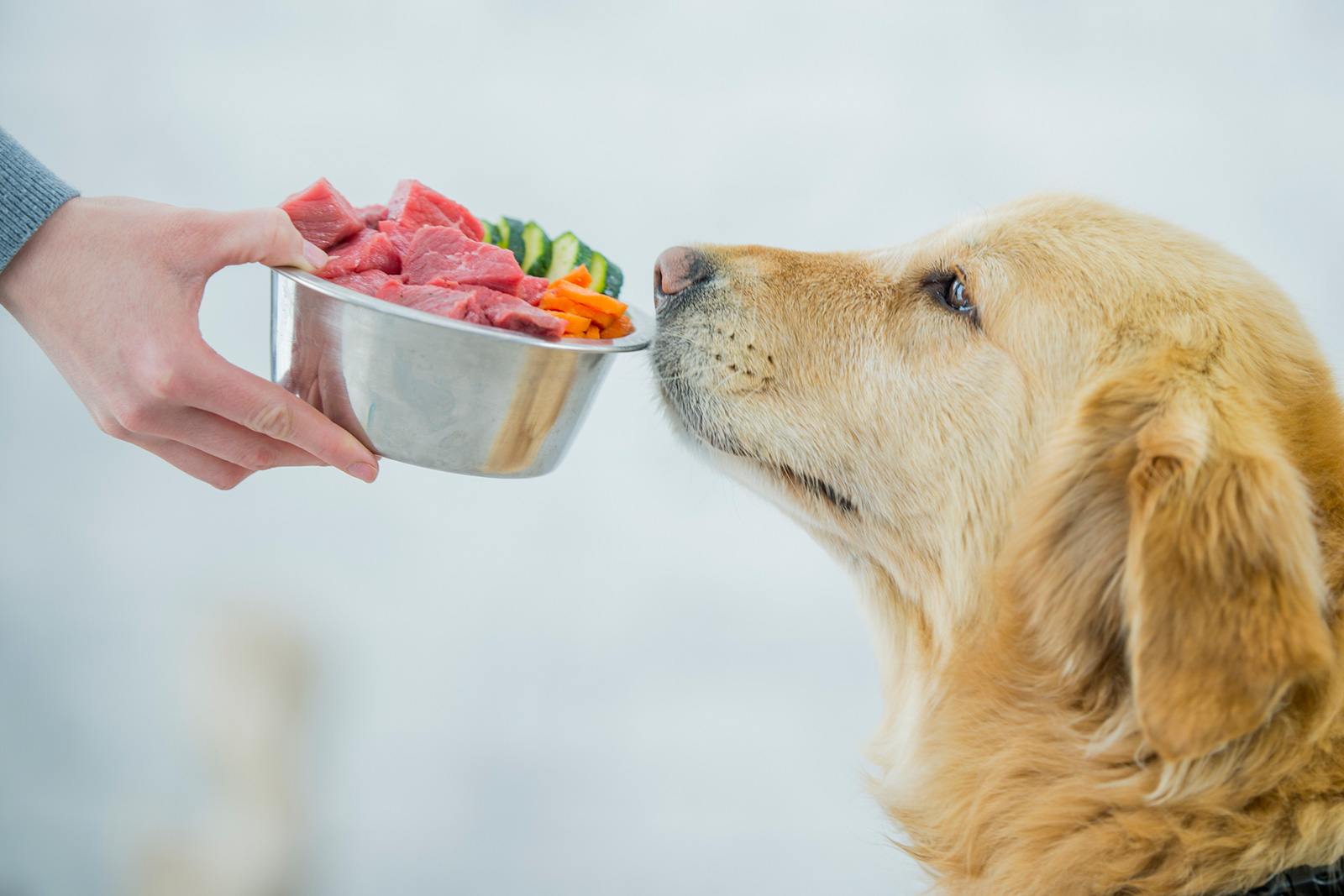
How to Choose the Right Dog Food: A Comprehensive Guide
Choosing the right dog food is crucial for your pet’s health. But with so many options, it can be hard to know what to pick. This guide will help you match your dog’s needs with the best nutrition.
What’s in your dog’s food bowl could be the key to their health. Are you sure you’re giving them the best food? Finding the right food can seem overwhelming. But with the right knowledge, you can improve your pet’s health.
For puppies, look for foods with at least 22.5% protein. For adults, 18% is the minimum. But high-quality foods often have 25%-35%. For big puppies, keeping them slim is important to prevent health problems.
But protein isn’t the only thing to consider. Each dog food has different ingredients that support your pet’s health. You might wonder if commercial food, ancestral diets, or raw food is best. Watching how your dog reacts can help you decide.
Let’s learn more about choosing the right food for your dog. With our guide, you can make sure your dog is not just fed, but truly nourished. Are you ready to improve your dog’s diet?
The Importance of Good Nutrition for Canine Health

Good nutrition is key for a dog’s health and energy. Making smart canine dietary choices helps with their physical and mental health. It keeps their coat shiny and supports their metabolism.
A dog nutrition guide says proteins are vital, making up to 30% of a dog’s diet. They help with skin and fur care. Young dogs need about 25% to 30% protein in their food for growth.
But, it’s not all about protein. Managing calories is important to avoid obesity, which can lead to diabetes and joint pain. Most adult dogs need fewer than 350 calories per cup of food. The right nutrients vary with the dog’s age, so they need special diets to stay healthy.
When it comes to vegetarian or vegan diets, dogs can do well on plant-based foods if they’re balanced. But, these diets should be planned carefully with a vet to make sure they meet all the dog’s needs.
Fats are crucial for healthy skin, fur, eyes, and brain function. Carbs also give dogs energy, and many foods include whole grains for extra nutrients and fiber.
Choosing the right food for dogs is more than just filling their bellies or following trends. It’s about making thoughtful choices to support their health at every life stage.
Choose the Right Dog Food: Homemade vs Commercial Options
Choosing the right food for your dog is a big decision. You have to think about homemade or commercial options. Each has its own pros and cons, like time, money, and health goals.

Homemade dog food lets you control what goes into your pet’s meals. You can avoid harmful additives and make meals tailored to your dog’s needs. But, making sure each meal is balanced can be hard. You might miss out on important vitamins like E and B12 unless you’re careful.
Commercial dog food is easy and meets strict nutritional standards. It suits dogs at any life stage, from puppies to seniors. But, it can have recalls and contamination issues, as the FDA has shown.
Choosing between homemade or commercial food is important. If you go homemade, a vet nutritionist can help make sure it’s right for your dog. For commercial food, keep up with recalls and know what’s in your pet’s food to keep them safe.
Evaluating dog food is more than picking between homemade or store-bought. It’s about making a smart choice for your pet’s health and happiness.
Understanding AAFCO Guidelines and Nutritional Adequacy Statements
When looking at evaluating dog food, knowing the AAFCO guidelines is key. The Association of American Feed Control Officials sets rules for feeding directions and nutrient levels for different life stages. These standards are crucial for pet food quality.

AAFCO guidelines require specific labels on pet food, including a nutritional adequacy statement. This statement tells pet owners if the food is right for their dog’s life stage, like growth, maintenance, or all life stages. It helps in evaluating dog food for the right age group, ensuring balanced nutrition for their needs.
AAFCO guidelines also focus on the right balance of nutrients. This balance is crucial for puppies needing more protein for growth or adult dogs needing balanced nutrients for maintenance. These standards help pet owners choose the right food for their pets.
For a detailed guide on creating a balanced diet plan for your dog, check out this guide.
AAFCO also requires pet food to pass feeding trials or lab tests to prove it meets life stage requirements before it hits the market. This ensures the food supports pets’ health, growth, and well-being.
In summary, the AAFCO guidelines play a big role in regulating dog food quality. They ensure products are correctly labeled and have the right nutrients for different pet life stages. This helps pet owners evaluate dog food well, supporting their pets’ health.
Dog Food Selection by Life Stage: Puppies to Seniors
It’s key to know what dogs need at different ages when selecting dog food. Dogs at every stage, from playful puppies to wise seniors, need food that fits their age, size, and health. This helps them grow well and avoid health problems like obesity, which is common in North America.
Puppies grow fast, especially big breeds, increasing in size by 70 times in their first year. They need food full of protein and fats for growth. Adult dogs need a balanced diet to stay healthy without eating too much. They usually switch to adult food between 9-15 months, based on their breed.
At around seven years old, dogs should move to senior dog food. This type has fewer calories and fats but still supports joint health with glucosamine and chondroitin. Now Fresh’s senior dog food includes pumpkin for fiber and probiotics for digestion.
Every life stage shows how vital it is to pick the right dog food. It should meet AAFCO standards and fit the dog’s life stage needs. For example, big breeds get kibble that’s big and helps them eat slowly, which is good for their health. Small breeds get kibble that’s easy to chew and helps keep their teeth clean.
Dealing with obesity is a big issue. The right amount of calories and ingredients like L-carnitine for heart health are key. Knowing this helps pet owners choose food that keeps their dogs happy and healthy for a long time. Some dogs need special food for allergies or health problems, showing the need for a tailored diet.
Deciphering Dog Food Labels: Beyond the Marketing
Choosing the right diet for your dog is key. It’s important to know how to read dog food labels. These labels are more than just marketing tools; they’re a key part of a good dog nutrition guide. By looking at the guaranteed analysis section, you can see the protein, fat, fiber, and moisture levels. These are key to understanding food quality.
Looking at the ingredient list is also vital for picking the right dog food. Ingredients are listed by weight, so heavy items come first. Ingredients like Brewer’s Rice or Corn might be fillers that don’t offer much nutrition. They could cause stomach problems or allergies in dogs.
On the other hand, ingredients like Lamb Meal or Whitefish Meal are better protein sources. They are good for dogs with certain dietary needs. These choices can help you pick a better food for your dog.
Some dog foods also have ingredients like Pumpkin, Coconut Oil, prebiotics, and probiotics. These help with digestion and keep the gut healthy. They are important for your dog’s overall health but are often overlooked in ads.
Knowing what terms like “complete and balanced” mean is also important. This term means the food has all the nutrients your dog needs every day. For example, a “Beef Dinner” label should have at least 25% beef. If it doesn’t, it might not be good for your dog, even if it sounds great.
In short, picking the best dog food is not just about what’s said on the label. It’s about understanding what makes a food good and how it affects your dog’s health. This way, you’re not just buying food; you’re giving your dog a gift for a healthy and happy life.
Evaluating Dog Food Ingredients for Optimal Canine Health
Choosing the right ingredients in dog food is key for your pet’s health. It affects both their body and mind. High-quality, nourishing ingredients can greatly improve their well-being. The best dog food options have real meat, veggies, and whole grains first, showing they’re the main ingredients.
Open Farm is a top choice with its recipes. They use ethically sourced proteins like grass-fed beef and sustainable seafood. Plus, they add non-GMO fruits and veggies. These ingredients are packed with nutrients and don’t have artificial stuff, making them among the best dog food options.
They also include important fats like omega-3 and omega-6. These fats are great for the heart, skin, and brain. They really help with your dog’s overall health.
On the other hand, dog foods with fillers or by-products might not be as good. It’s important to watch out for fillers like corn or soy. They can cause allergies in some dogs. Without good ingredients, dogs might get sick or have bigger health problems later.
Open Farm offers different foods for different dogs. They have special recipes for puppies, seniors, and dogs with specific needs. This makes it easier for owners to pick the best dog food options for their pets. It helps keep them healthy and happy for a long time.
Selecting the Best Dog Food Options Based on Scientific Evidence
Choosing the right dog food is key to your pet’s health. Selecting dog food based on science meets your pet’s nutritional needs. The Association of American Feed Control Officials (AAFCO) sets important standards. These standards ensure the right balance of fat, protein, and fiber for different life stages.
Looking at the healthiest dog food options is crucial. The best dry dog foods have at least 18% protein for adults and less than 20% fat. These foods often go beyond AAFCO’s requirements for a balanced diet. Experts suggest specific nutrient levels like 24% protein, 12% fat, and 4% fiber per cup.
When starting a new diet for your pet, do it slowly over 1-2 weeks to prevent stomach issues. Be aware of common dog allergens like beef, dairy, and chicken. Make sure the food meets FDA safety standards and check the company’s website for nutrition details and feeding guides.
To keep your pet healthy, learn how to prevent diseases like canine distemper or parvovirus. A guide like the comprehensive guide to preventing common dog diseases offers tips on vaccinations and keeping your home clean for your pet.





